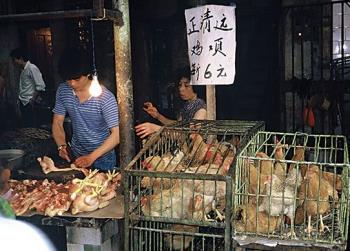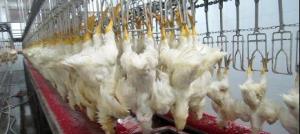 The U.S. Broiler industry relies on USDA-FAS GAIN reports for data on production and consumption especially with respect to importing and competitive nations. The GAIN report on China, CH2020-0040 released on March 27th reflecting the most important potential market for the broiler and turkey industries was disappointing with respect to scope and detail.
The U.S. Broiler industry relies on USDA-FAS GAIN reports for data on production and consumption especially with respect to importing and competitive nations. The GAIN report on China, CH2020-0040 released on March 27th reflecting the most important potential market for the broiler and turkey industries was disappointing with respect to scope and detail.
The Beijing FAS Post projected that in 2020 chicken meat production will attain 15.75 million metric tons a 14.5 percent increase over 2019. This double-digit expansion begs some justification given the facilities required to produce the incremental volume of 19 million broilers per week. Imports will amount to 675,000 tons representing 4.1 percent of availability. China will operate with a 300-ton net import figure given total exports of 375,000 tons. Domestic consumption of 16.05 million metric tons actually represents a per capita consumption of 11.7 kg (22.8 lbs.) given a population of 1.4 billion. An example of superficiality in preparation of the report is demonstrated by the Production, Supply and Demand table that is devoid of units and the first year tabulated should have been 2018, not 2019.
 According to the GAIN report, chicken meat consumption comprises 45 percent white-feathered broilers, 30 percent traditional "yellow birds", 10 percent derived from spent hens and 15 percent a hybrid between yellow birds and conventional broilers.
According to the GAIN report, chicken meat consumption comprises 45 percent white-feathered broilers, 30 percent traditional "yellow birds", 10 percent derived from spent hens and 15 percent a hybrid between yellow birds and conventional broilers.
A graph showing imports of grandparents stated in tons, taken straight from a National Bureau of Statistics report is meaningless unless converted to packages or individual chicks. The data demonstrates the sharp drop in imports from 2016 to 2017. At the beginning of 2016, China demanded that exporters of grandparents suppliers provide great-grandparent level strains. The major EU and U.S. primary breeders of broilers demurred for obvious reasons. Eventually China was able to obtain great grandparent stock from a second-tier supplier in the EU. It is not surprising that the report notes that a large integrator "has announced a breakthrough in white broiler genetics and will commence suppling grandparents domestically and internationally”. This revelation justifies the previous decision of the major primary breeders not to supply GGPs in 2016 since the reliability of China to adhere to contract provisions relating to competitive restrictions is always in question. The emergence of China as an exporter of GP broiler packages is a clear example of coercive agreements with international suppliers with forced transfer of intellectual property, in this case genetic traits intrinsic to GGP level strains.
The imposition of spurious disease-related barriers to importation of GGPs in 2016 restricted the availability of breeding stock. Accordingly producers in China were forced to molt GPs and parents restricting the availability of commercial broiler chicks. This self-inflicted problem has come back to haunt the industry in China given the current demand for chicken meat following the  advent of African swine fever. Imports of grandparent stock increased sharply from August 2019 onwards with product supplied from ultra- high biosecurity farms in New Zealand.
advent of African swine fever. Imports of grandparent stock increased sharply from August 2019 onwards with product supplied from ultra- high biosecurity farms in New Zealand.
The GAIN report on China superficially notes the escalation in price of pork as a result of ASF. The report is woefully lacking in costs of production including feed, chicks and labor and does not provide wholesale and retail prices of chicken both whole and portions that would be of value to a U.S. exporter. The report also fails to provide production parameters for yellow birds, conventional broilers and the so-called H17 hybrid. Again this information would be of value to the U.S. industry.
Given the importance of China, the GAIN report has profound deficiencies and does not reflect favorably on the FAS. It would appear that the report was a hastily assembled document relying only on data released by the Government of China data that is always suspect, supplemented by somewhat obvious observations lacking in quantitative support.